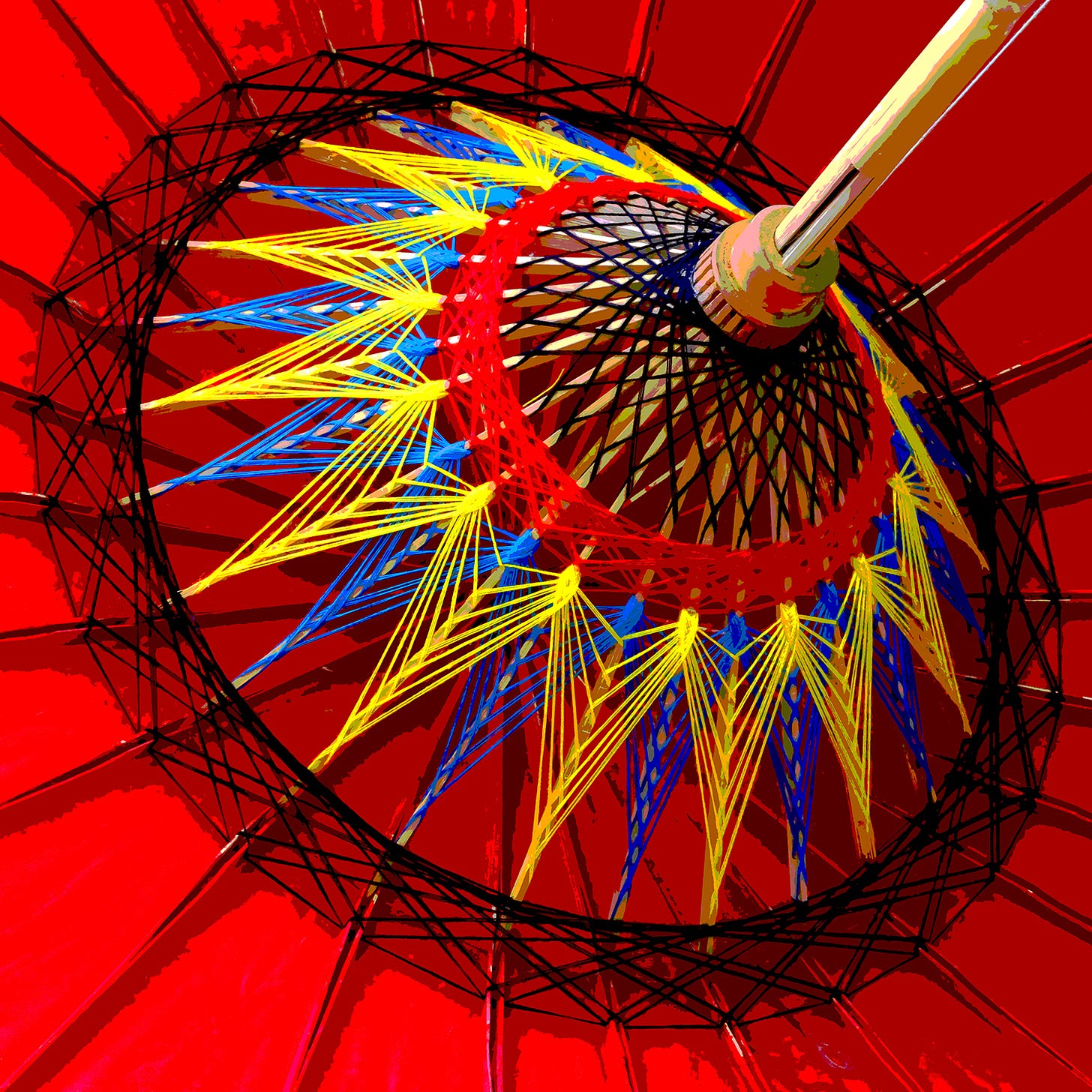VII. Epitome of sustainability
Part 7 of an international solo on ”Lanna“ by Lim Siang Jin. This online exhibition on contemporary photography, comprising 20 parts, is from May 6 to June 5, 2025
AT FIRST GLANCE, the Thai umbrella appears modest—but appearances deceive. Bo Sang's handcrafted umbrellas, woven from bamboo and saa paper, have endured since the 19th century when monks shared their craft with villagers. By the 1940s, the village had transformed into an artisan hub, its umbrellas evolving from simple rain shields to cultural emblems adorned with lotus blooms and nagas. Despite factory-made competition, Bo Sang treasures its heirloom craft. These vibrant umbrellas grace temples, festivals, and homes, telling stories of Lanna folklore. Locals believe foreign umbrellas lack soul; theirs carry their ancestors’ spirit. Bo Sang thrives on a seemingly closed-loop system—local bamboo, mulberry paper, and natural pigments sustain livelihoods while worn umbrellas biodegrade.
More than meets the eye
DESPITE its delicate appearance, the Thai umbrella is hardy and dependable. I know this, having used a basic version frequently as a young boy in Penang. Ours were probably imported from Myanmar. The secret is in its material combination. The foundation is saa paper, made from mulberry bark—naturally tear-resistant and lightweight. When treated with a water-repellent mixture of rice starch and natural wax, it achieves impressive weather resistance while maintaining flexibility. The bamboo framework provides crucial structural integrity. Hand-carved ribs form a resilient lattice that withstands significant wind pressure. The joinery, secured with cotton thread and natural adhesives, makes the structure highly flexible.

Beauty with precision
BEYOND its strength, the Thai umbrella’s internal structure is an art form. A system of bamboo ribs and pulleys allows for smooth opening and closing, distributing tension evenly to prevent breakage. Some designs use colourful silk threads to hold the pieces together, adding an aesthetic charm without compromising function. These fine details, though seemingly fragile, are engineered for longevity. Thai artisans meticulously arrange each component to maintain balance and usability. The result is a mechanism that not only looks graceful but operates with remarkable efficiency.

Reflection of Thai spirit
THE THAI umbrella, celebrated for its craftsmanship, can be interpreted as a metaphor for the Thai cultural ethos—graceful in appearance yet resilient in structure. Thai society emphasises composure and adaptability, qualities honed through historical challenges such as maintaining sovereignty during colonial pressures and navigating modernisation. While the umbrella itself is not an official national symbol, its artisanship traditions reflect deeply-held values of patience and meticulousness. Like the umbrella’s bamboo frame that bends without breaking, Thai cultural identity has historically demonstrated remarkable flexibility while preserving its essential character.
For more information, click on links: Stephen Menon, O Art Space Gallery, Lim Siang Jin and his art, here and here. For a detailed acknowledgment, click here




